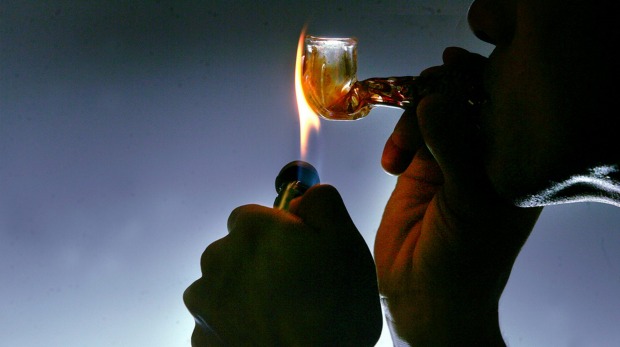
Government research shows the use of the drug ice is well below peak levels.
Warnings of an “ice epidemic” by senior politicians and police may have been overstated, with federal government research suggesting use of the drug is well below peak levels.
The Department of Health-commissioned research found “the use and the desire to use ice has declined”, the drug’s “brand” amongst young people had been “damaged” and overall illicit drug use had become “normalised in society”.
The revelation of the confidential government drug research adds to a confusing picture about the use of ice, also known as methamphetamine, in Australia as strong debate continues about whether it is best treated as a law and order problem, a public health issue or a combination of both.
Prime Minister Tony Abbott recently said Australia’s ice problem was “way beyond anything before now” and the Australian Crime Commission has warned “ice is emerging as a pandemic akin to the issue of ‘crack’ cocaine in the United States”.
Mr Abbott has established a national ice taskforce headed by Victoria’s former police chief Ken Lay and launched a $11 million national advertising blitz.
The taskforce, which is travelling Australia, is understood to have received overwhelming feedback from various communities concerned by the devastating consequences of ice use in their area.
But public health experts such as Melbourne University’s John Fitzgerald have warned against scare campaigns and said data showed only 2 per cent of Australians were using ice and the overall number of amphetamine users had declined from 1998.
To support its contention that ice use had declined, the research paper cited 2012 statistics that showed a 23 per cent decrease in the use of ice by regular ecstasy and psychostimulant drug takers between 2003 and 2012.
In regards to ice, speed and heroin, the research advised “there did not seem to be any current need to communicate to young people specifically”.
“It appears that ecstasy and cocaine have the most potential for increased usage in the near future, if there are changes to certain market conditions,” the research stated.
However, the paper, finalised in mid-2013, noted that ice use was rebounding from a low of 15 per cent of regular drug users surveyed having admitted taking it during 2009. If that trend continued, the paper suggested “the ice campaign may need to be re-visited”.
The research, which involved 1600 online interviews of people aged 12-24, concluded “perceptions of ice appear to have worsened” and that only 2 per cent of the 1600 participants had admitted to using the drug.
“Heroin and ice are the most likely to be perceived as dangerous drugs (76 and 74 per cent respectively) … alcohol only 17 per cent,” the paper found.
“Ice has strong negative connotations which are held by drug users and non-users alike. Of all the drugs explored it probably has the clearest perceptions of all.
“For drug users, ice is often held up as a line they would not cross and among ice users themselves there is acute awareness of the negative potential of the drug … users were perceived to be intense, psycho, junkies, anti-social and boring.”
A health department spokeswoman acknowledged there was a view “that 2.1 per cent of the population using methamphetamines is not an epidemic”, but added this overall prevalence did not take into account the damage caused by ice and its significant impact on rural and regional communities.
The research also reveals how different groups are targeted by government drug awareness campaigns, with the primary targets being people described as “risky rejectors”. These were people not currently taking drugs but are open to fun and new experiences.
The next key targets were people described as “fun seekers” and “reality swappers”. Both were categorised as people who would consume drugs.
The majority of those surveyed as part of the research program said the internet would be their first option for help about illicit drugs use, with friends and local doctors next. Only 23 per cent would seek advice from their parents.
As such, the researchers suggested the internet be the key medium for any advertising campaign.
The latest Australian Crime Commission report showed a record number of ice seizures and arrests in the past 12 months, even though the volume of drugs seized had declined.
The report also highlighted an increase in purity in ice, particularly in Victoria, at the same time it had become cheaper to buy.
In an opinion piece published by Fairfax Media this week, Melbourne University Associate Professor John Fitzgerald criticised the use of police statistics as being an “unsophisticated interpretation of drug trends”.
Associate Professor Fitzgerald argued the continued portrayal of ice users as violent was dangerous and only a “partial truth”. It did not affect all users like this, he wrote.

